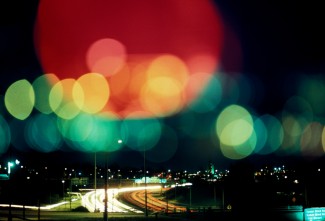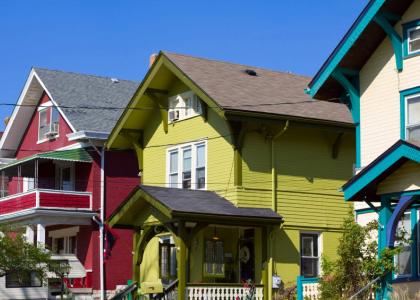Washington, D.C.’s commute just got brighter—and possibly safer. In late 2018, the city’s Metro made a $50 million dollar commitment to install LED lights in its subway stations. As of January, 15 stations have been upgraded to energy-efficient lighting, with the remaining 33 stations to follow within two-and- a-half years.
The difference is staggering. In addition to being more efficient, LEDs (light emitting diodes) have made stations an average of six times brighter. They make Metro more accessible to people who are visually impaired or have other disabilities. They may also make passengers feel safer and contribute to Metro’s declining 2018 crime rate, its lowest in 19 years.
Several cities are using LEDs to save money and increase the safety of public spaces. While some studies question whether bright lights actually deter crime, others do find an increased perception of safety.
Pedestrians felt safer in areas lit by bright white lights such as LEDs, as opposed to less efficient high-pressure sodium lights commonly used for streetlamps, according to a 2016 study by Antonio Manuel Peña-García, engineering professor at the University of Granada. His research suggests increased ability to recognize faces could be one reason white lights put people at ease. In addition to facial recognition, improved lighting allows citizens and law enforcement to provide more accurate descriptions of clothing color, car color, and other details when reporting crimes or searching for missing persons.
In an interview, Pena-García said higher perceived safety may not actually increase safety, because it “can make people more exposed to crime.” He said LEDs’ greatest advantage is their ability to be easily turned on, off, or dimmed. In contrast, dimming high pressure sodium or metal halide streetlights has negative effects on their lifetime. He adds: “That decrease in lifetime was bad in economic and environmental terms.”
Washington, DC, San Francisco, and the greater Los Angeles area have installed LEDs in poorly lit public transit parking lots and garages. DC’s parking garage LED overhaul has reduced energy use 68% and saved an annual $2 million in operating costs.
LEDs are also being used to reduce collisions along busy roads and highways. The Michigan Department of Transportation (MDOT) cites “motorist visibility and traffic safety” as a key factor for upgrading freeway lights to LEDs. Before the upgrade, MDOT’s Robert Morosi said only 70% of Detroit’s freeway lights were operational—a huge safety issue for citizens and first responders. Currently, 99% are.
“While efficient lighting may not eliminate all crashes, well-lit freeways provide a comfort level to drivers,” Morosi told ACEEE, noting this is particularly the case in darkened winter months or in urban areas with multiple freeway interchanges. When asked about the impact of LEDs, he added: “To sum up in one word: safety. LEDs do not only provide better illumination on pavement markings and signage, they provide a sense of security.” In coming years, MDOT plans to extend its LED upgrades to freeway rest areas and park and rides.
Last month, in Cincinnati, Duke Energy began installing LEDs outside two of the city’s largest public high schools to reduce early morning traffic accidents and keep students safer.
Other cities are taking advantage of smart lighting technology, which can equip LEDs with sensors and other features.
In Chattanooga, Tennessee, city officials were able to reclaim Coolidge Park, an area prone to gang violence and gunfire, by installing remote-controlled LED lights that could be brightened, dimmed, or flashed on demand. When flashing, the lights caused gangs to disperse and reduced violence in the park. Other cities such as Fresno, California, and Peoria, Illinois, are using the microphones in smart streetlights to detect noises that resemble gunshots to expedite emergency response.
Sensors in smart lighting technology can also be used to monitor the environment by measuring temperatures, greenhouse gases, and earthquake vibrations.
LED lights make public spaces more accessible, more comfortable, and more efficient. ACEEE has a toolkit for cities in partnering with utilities to upgrade outdoor lighting; we will incorporate LED lighting upgrades as a metric in our upcoming City Clean Energy Scorecard. While there is no definitive research on whether LEDs reduce crime, they provide many other benefits. LEDs remain a good investment for cities looking to save energy, improve visibility, and help their communities shine a little brighter.
Jen Amann, director of ACEEE’s buildings program, contributed to this report.





